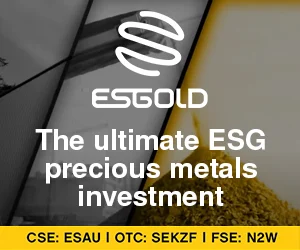In the ever-evolving world of finance, precious metals have long been regarded as safe havens for investors seeking stability amid market volatility. This week, the performance of precious metal exchange-traded funds (ETFs), particularly those focused on gold and silver, has remained relatively steady, with only minor fluctuations observed in platinum and palladium reserves. This article delves into the implications of these trends, the reasons behind them, and why they matter to investors and the broader market.
What’s Happening with Precious Metal ETFs?
The recent stability in precious metal ETFs suggests a cautiously optimistic sentiment among investors. For instance, the SPDR Gold Trust, one of the largest gold ETFs, has maintained a substantial reserve of over 28 million ounces, despite a year-to-date loss of 1.25 million ounces. Similarly, the iShares Silver Trust experienced a slight dip of 0.31%, equating to a decrease of 1.46 million ounces, yet it has seen an impressive year-to-date increase of over 5 million ounces.
These patterns reflect a delicate balancing act influenced by shifting market demands and ongoing economic uncertainties. The minor changes in platinum and palladium reserves further highlight a cautious investor stance, as these metals are closely tied to industrial applications and emerging technologies.
What Does This Mean for Investors?
The steadiness observed in gold and silver ETFs indicates that investors continue to value these assets as reliable stores of value amid fluctuating market conditions. As the SPDR Gold Trust and iShares Silver Trust hold their ground, they underscore a strong belief in the protective qualities of gold and silver against inflation and geopolitical risks. This trend suggests that investors are increasingly favoring tangible assets as a hedge against economic uncertainties.
In a world where market volatility is a constant concern, the resilience of precious metals serves as a reminder of their historical role as safe havens. Investors are likely to keep a close eye on these assets, particularly as global economic forecasts remain unpredictable.
The Bigger Picture: Precious Metals and Global Economic Shifts
The minor fluctuations in platinum and palladium holdings are particularly noteworthy, as they reflect broader market interpretations of industrial demands and the ongoing transition toward green energy. Both platinum and palladium play crucial roles in automotive catalysts and electronic applications, making their movements in the ETF space indicative of technological advancements and shifts in consumer behavior.
As sustainable technologies continue to evolve, the demand for these metals is expected to rise, further influencing their market dynamics. Investors should consider these factors when evaluating their portfolios, as the interplay between precious metals and industrial applications can provide valuable insights into future trends.
Why Should You Care?
For investors, understanding the current landscape of precious metal ETFs is essential for making informed decisions. The stability of gold and silver as safe-haven assets highlights their enduring appeal in times of uncertainty. As inflation concerns and geopolitical tensions persist, the demand for these metals is likely to remain strong.
Moreover, the shifts in platinum and palladium reserves signal important trends in the industrial sector, particularly as the world moves toward more sustainable practices. Investors who pay attention to these developments can position themselves advantageously in a rapidly changing market.
Conclusion
In summary, the recent performance of precious metal ETFs reflects a complex interplay of market sentiment, economic uncertainties, and technological advancements. As gold and silver continue to hold their ground as safe-haven assets, and as platinum and palladium adapt to the demands of a changing world, investors must remain vigilant and informed. By understanding these dynamics, they can better navigate the challenges and opportunities that lie ahead in the precious metals market.




